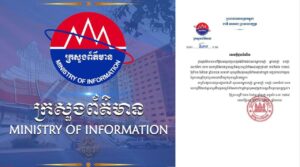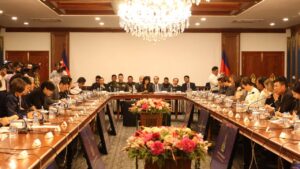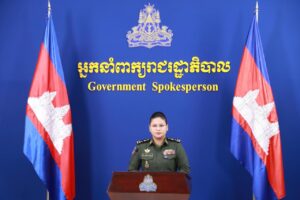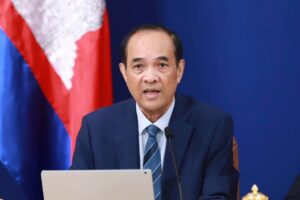Thailand Claims Cambodia Violated the Ceasefire Agreement on July 28, 2025 – Global Media and Diplomats Disagree
 Thailand Claims Cambodia Violated the Ceasefire Agreement on July 28, 2025 – Global Media and Diplomats Disagree
Thailand Claims Cambodia Violated the Ceasefire Agreement on July 28, 2025 – Global Media and Diplomats Disagree
Just as Thailand initially denied the use of cluster munitions before later admitting to it, Cambodia now finds itself rejecting a similar allegation, this time from Thai army spokesman Major General Winthai Suvaree.
On the night of July 28, 2025, after five days of armed clashes, Cambodia and Thailand agreed to a ceasefire. Shortly after, Thailand alleged that gunshots and small explosive devices were fired at its military positions, framing the event as a violation of the truce. To support this claim, Thai officials released a photo showing someone holding a watch to indicate the time of the supposed incident, along with an audio recording of gunfire. However, the evidence lacks independent authentication, and Thailand has not released geolocation data, timestamps, or physical evidence linking the incident to Cambodian forces.
In response, Cambodia’s Ministry of Defence categorically denied the accusation, stating that Cambodian troops fully respected the ceasefire agreement. A CNA Singapore correspondent on the ground in Oddar Meanchey province reported, “…much of the morning and day talking with random villagers… no sounds of fighting were heard.” While this provides circumstantial support for Cambodia’s position, it underscores the urgent need for an independent verification mechanism, such as observers from ASEAN, the United Nations, or neutral third parties, to establish facts on the ground.
To demonstrate its commitment to transparency, Cambodia invited military attachés and foreign diplomats to inspect a border checkpoint previously damaged during the fighting. Cambodian officials presented evidence that no further attacks had occurred. The observers found no signs of recent shelling or gunfire, such as new structural damage or shell casings, casting doubt on the Thai military’s version of events.
Notably, Cambodian media outlets are currently restricted from accessing Thai news platforms, creating a dangerous asymmetry in narrative control. While Thai narratives circulate freely in international and regional media, Cambodia’s rebuttals are often unseen by Thai audiences. Unlike Thailand, Cambodia’s media landscape allows access to foreign and even critical reports, further underlining its openness.
Critics of the Thai government suggest that these accusations may serve strategic political purposes: to rally domestic support, discredit Cambodia in global forums, or create pretexts for further military build-up. Such tactics are not new in conflict scenarios, and history shows that the party eager for escalation often seeks to shift blame first.
Some may question whether Cambodia could still be guilty despite its transparency gestures. But history and logic suggest otherwise. A country attempting to cover up a violation rarely invites neutral observers to investigate, nor actively participates in high-level diplomacy, such as the upcoming General Border Committee (GBC) meeting. Cambodia has done both.
If Thailand’s claims are credible, they should welcome, not resist, the presence of international monitors to confirm them. Instead, Thailand has rejected Cambodia’s call for neutral observers at the GBC, further weakening its moral and diplomatic stance.
In the absence of verifiable, third-party evidence, Thailand’s accusations appear more like political maneuvering than a pursuit of truth. Meanwhile, Cambodia’s actions continue to reflect a commitment to peace, transparency, and adherence to international norms.
Author: Hann Eung






